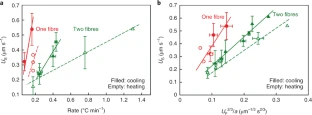Science Daily July 15, 2021
Many microorganisms exploit the fact that elasticity breaks the time-reversal symmetry of motion at low Reynolds numbers, but this principle has been notably absent from model systems of active, self-propelled micro swimmers. An international team of researchers (Bulgaria, Poland, UK) has introduced a class of micro swimmers that spontaneously self-assembles and swims without using external forces, driven instead by surface phase transitions induced by temperature variations. The swimmers are made from alkane droplets dispersed in an aqueous surfactant solution, which start to self-propel on cooling, pushed by rapidly growing thin elastic tails. When heated, the same droplets recharge by retracting their tails, swimming for up to tens of minutes in each cycle. Thermal oscillations of approximately 5 °C induce the swimmers to harness heat from the environment and recharge multiple times. They have developed a detailed elasto-hydrodynamic model of these processes and highlight the molecular mechanisms involved. The system offers a convenient platform for examining symmetry breaking in the motion of swimmers exploiting flagellar elasticity. The micro swimmers can be used as probes for studying biological propulsion and interactions between artificial and biological swimmers…read more. TECHNICAL ARTICLE

Droplet swimming speed. Credit: Nature Physics (2021)